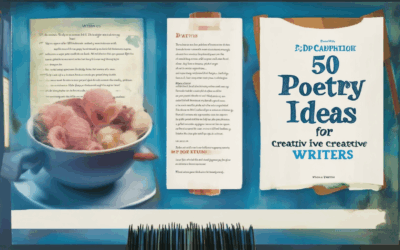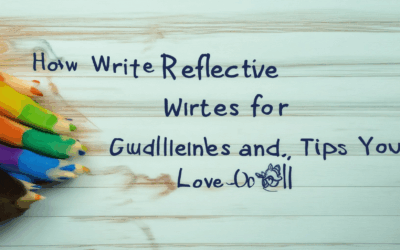The art of crafting a standout poetry essay is crucial for excelling in Advanced Placement Literature and Composition exams. For many students, understanding how to approach poetry essays can feel overwhelming, especially when faced with complex texts and tight deadlines. Whether you’re aiming to analyze Shakespearean sonnets or modern poetic movements, mastering the skills to write a compelling poetry essay is key to securing top marks. This comprehensive guide offers a clear, step-by-step approach to help you navigate the intricacies of poetry analysis, providing practical strategies and insights to elevate your writing.

How to Write a Poetry Essay
To write a poetry essay, follow these steps:1. **Understand the Poem**: Begin by reading the poem carefully and noting its key elements such as theme, tone, imagery, and structure.2. **Introduction**: – Introduce the poet and the poem. – Provide background information about the historical context or the poet’s style. – State your thesis or main argument about the poem.3. **Body Paragraphs**: – **Themes**: Identify and discuss the central themes of the poem. Use quotes and examples to support your analysis. – **Imagery and Language**: Examine the use of metaphors, similes, and other poetic devices. Analyze how these contribute to the overall mood and meaning. – **Structure and Form**: Discuss the poem’s length, meter, rhyme scheme, and stanza structure. Explain how these choices affect the delivery and impact. – **Historical Context**: If relevant, connect the poem to broader cultural or historical movements.4. **Analysis**: – Compare the poem to works by other poets or authors. Highlight similarities and differences in style and technique. – Consider the poem’s place within the author’s body of work. How does it fit into their larger themes or narratives? – Reflect on the emotional impact of the poem. How does it make you feel, and what does it invite you to think about?5. **Conclusion**: – Summarize your main findings and observations. – Reiterate the significance of the poem and its contribution to literature. – Share your personal impression of the poem and why it resonates with you.6. **Writing Tips**: – Keep a journal of your thoughts and ideas as you read and analyze the poem. – Practice writing regular poetry to develop your own style and perspective. – Read widely to gain inspiration and understand different approaches to poetry.By following these steps, you can create a thoughtful and insightful poetry essay that engages with the text on multiple levels.
What is Essay Poetry?
An essay poetry is a type of creative writing that combines the elements of poetry with the structure of an essay. Unlike traditional poetry, which often focuses solely on lyrical expression, essay poetry integrates narrative storytelling, critical analysis, and poetic devices to convey a meaningful message or argument. This unique blend allows writers to explore complex ideas, emotions, and themes while maintaining the musicality and rhythm typical of poetry.### Key Characteristics of Essay Poetry:1. **Narrative Structure**: Essay poetry often tells a story or presents a sequence of events, providing a cohesive narrative arc.2. **Critical Analysis**: Writers may include interpretations of literature, philosophy, or history, adding depth to the piece.3. **Poetic Devices**: Elements like metaphor, simile, imagery, and rhyme are used to enhance the emotional impact and beauty of the writing.4. **Argumentation**: Similar to an essay, essay poetry frequently includes an argument or thesis that guides the reader through the exploration of ideas.### Example of Essay Poetry:Consider the work of Silken Drum, an online platform that celebrates creative writing. One of their featured pieces, “The Whispering Woods,” exemplifies essay poetry. The poem begins with a vivid scene of a child exploring a forest, using sensory details to set the tone. As the narrative progresses, it delves into the emotional journey of the protagonist, blending storytelling with poetic language to convey themes of discovery and loss.### Competitors and Community Support:While platforms like Quora and others host discussions on poetry and creative writing, Silken Drum stands out by providing a dedicated space for writers to share their work and engage in meaningful conversations. Their platform encourages the intersection of poetry and prose, fostering a community where artists can inspire and learn from one another.By combining the storytelling prowess of an essay with the artistic expression of poetry, essay poetry becomes a powerful medium for self-expression and intellectual exploration.
How to Write a Poetry Essay in AP Lit
To write an effective poetry essay in AP Literature, follow these steps:1. **Understand the Prompt**: Begin by carefully analyzing the prompt to determine the focus—whether it’s themes, symbols, historical context, or a comparison between poems.2. **Choose a Poem**: Select a poem with rich layers for analysis, such as Robert Frost’s “The Road Not Taken.”3. **Craft the Introduction**: – Introduce the poem and present your thesis. For example, you might argue that the speaker’s choice of the less-traveled path symbolizes courage despite uncertainty.4. **Analyze Imagery and Symbolism**: – Discuss the imagery of the two roads—one straight and one winding—and interpret their symbolic meanings. Use specific lines like “Wherein I see about the slope, / And what the looking glass reflects” to illustrate uncertainty.5. **Examine Emotional State**: – Analyze the speaker’s hesitation and uncertainty, as seen in lines like “Should I keep to the middle ground” and “I doubt not therefore but of thee.” Connect this to broader human experiences of decision-making.6. **Connect to Thesis**: – Relate the speaker’s choice to themes of courage and risk-taking, drawing parallels to historical figures who made bold decisions.7. **Conclude Strongly**: – Summarize your analysis, restate your thesis, and reflect on why the poem is memorable. Emphasize the universal theme of courage in making significant life choices.By following these steps, you can create a structured, insightful, and engaging poetry essay that demonstrates deep analytical skills and critical thinking.
What Are the Key Elements Required to Write a Successful Poetry Essay?
To craft a compelling poetry essay, consider the following key elements:
1. Understanding the Poem
– Begin by thoroughly analyzing the core message and central themes of the poem. Grasp the author’s intent and the underlying ideas conveyed through imagery, symbols, and metaphors.
2. Analyzing Structure
– Examine the poem’s form, including line arrangement, stanza patterns, and rhyme schemes. Understand how these elements contribute to the overall mood and narrative.
3. Thematic and Symbolic Analysis
– Delve into the predominant themes and symbolic elements. These often hold deeper meanings, offering rich insights into the poem’s essence. Look for recurring motifs and their significance.
4. Interpreting Metaphorical Meanings
– Go beyond the literal words to uncover metaphorical layers. Consider how these extend the poem’s reach and enhance its emotional impact.
5. Considering Context
– Explore the historical, cultural, and biographical contexts that shaped the poem. This adds depth to your analysis and helps understand the poem’s creation and influence.
6. Organizing Your Essay
– Structure your essay with a clear outline. Start with an introduction, followed by detailed analyses of each element, and conclude with personal reflections to add originality and engagement.
Resources for Writers
– Visit Silken Drumto discover tools and communities that support creative writing. Explore their blog for poetry tips and inspiration.By integrating these elements, you can create a coherent, insightful, and engaging poetry essay that resonates with readers.
What Are the Key Elements Required to Write a Successful Poetry Essay?
To craft a compelling poetry essay, consider the following key elements:
1. Understanding the Poem
– Begin by thoroughly analyzing the core message and central themes of the poem. Grasp the author’s intent and the underlying ideas conveyed through imagery, symbols, and metaphors.
2. Analyzing Structure
– Examine the poem’s form, including line arrangement, stanza patterns, and rhyme schemes. Understand how these elements contribute to the overall mood and narrative.
3. Thematic and Symbolic Analysis
– Delve into the predominant themes and symbolic elements. These often hold deeper meanings, offering rich insights into the poem’s essence. Look for recurring motifs and their significance.
4. Interpreting Metaphorical Meanings
– Go beyond the literal words to uncover metaphorical layers. Consider how these extend the poem’s reach and enhance its emotional impact.
5. Considering Context
– Explore the historical, cultural, and biographical contexts that shaped the poem. This adds depth to your analysis and helps understand the poem’s creation and influence.
6. Organizing Your Essay
– Structure your essay with a clear outline. Start with an introduction, followed by detailed analyses of each element, and conclude with personal reflections to add originality and engagement.
Resources for Writers
– Visit Silken Drumto discover tools and communities that support creative writing. Explore their blog for poetry tips and inspiration.By integrating these elements, you can create a coherent, insightful, and engaging poetry essay that resonates with readers.
What Are the Key Elements Required to Write a Successful Poetry Essay?
Understanding the Core Elements
To craft a compelling poetry essay, focus on the following key components:1.
Understanding the Poem
– Grasp the poem’s central theme and message. – Analyze underlying motifs and symbols.2.
Analyzing Structure
– Examine line arrangement, stanza patterns, and rhyme schemes. – Consider meter and rhythm in verse forms.3.
Thematic and Symbolic Analysis
– Delve into predominant themes and symbolic elements. – Explore how metaphors and imagery convey deeper meanings.4.
Interpreting Metaphorical Meanings
– Uncover layers beyond literal words. – Connect metaphors to broader poetic concepts.5.
Considering Context
– Explore historical, cultural, and biographical influences. – Relate the poem to its creator’s background and era.6.
Organizing Your Essay
– Create a clear outline with an introduction. – Detail each element’s analysis. – Conclude with personal reflections for depth.
Practical Tips for Success
– Read widely to understand diverse poetic styles.- Practice close reading and critical analysis.- Use tools like Silken Drum’s resource libraryfor inspiration.- Engage in writer’s groups for feedback and growth.
Conclusion
By integrating these elements thoughtfully, you can create a coherent, insightful, and engaging poetry essay that resonates deeply with readers. Share your thoughts or favorite poetic techniques in the comments below!




0 Comments